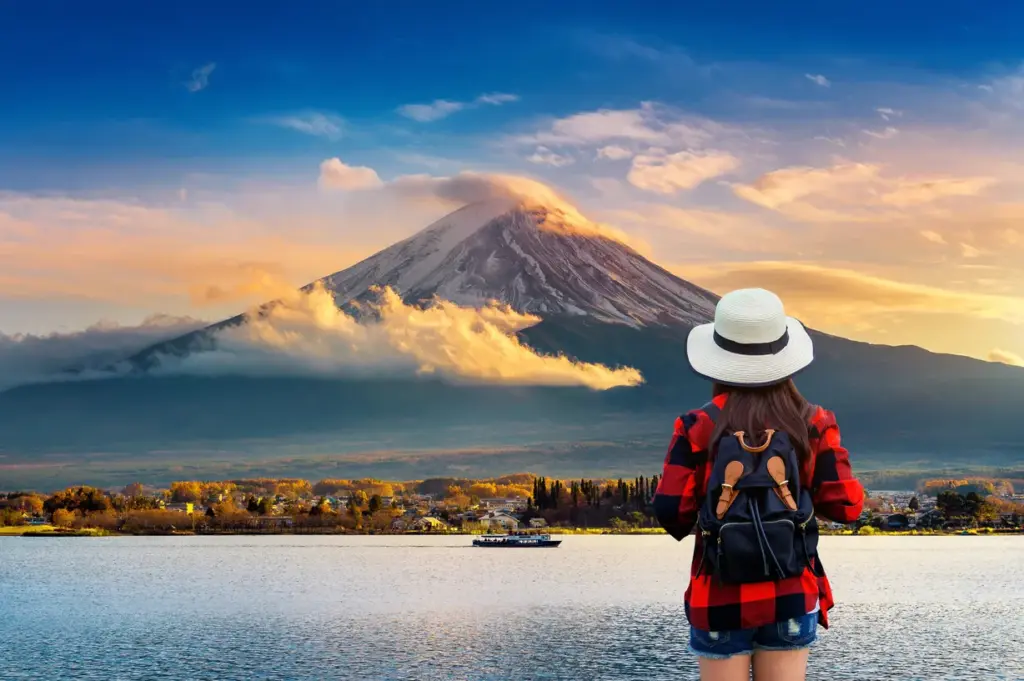Experience the Majestic Beauty of Mount Fuji
Mount Fuji, known as Fuji-san in Japan, is the country’s tallest mountain and one of its most iconic landmarks. Towering at 3,776 meters, it is a captivating destination for adventurers, nature lovers, and cultural enthusiasts alike. Whether you’re planning to climb to the summit or simply enjoy the breathtaking views, a visit to Mount Fuji is a must when traveling to Japan.
Located near Tokyo, Mount Fuji is easily accessible for a day trip or an extended stay. The area offers a plethora of activities and sights that cater to a wide range of travelers. From hiking trails, hot springs, to historic sites, there’s something for everyone. This guide will provide you with essential information, tips, and inspiration to make the most out of your Mount Fuji experience.
Why Visit Mount Fuji?
Mount Fuji is not just a geographical landmark; it holds deep cultural and spiritual significance in Japanese culture. The mountain is considered sacred and has been a pilgrimage site for centuries. Its symmetrical cone shape, visible from miles away, has inspired artists, poets, and travelers from around the world.
In addition to its cultural importance, Mount Fuji offers stunning natural beauty. The surrounding area is home to five beautiful lakes—Kawaguchiko, Saiko, Yamanakako, Shojiko, and Motosuko—which offer spectacular views of the mountain. These lakes also provide opportunities for water sports, fishing, and serene picnics.
How to Get to Mount Fuji
Mount Fuji is conveniently located about 100 kilometers southwest of Tokyo, making it an ideal destination for a day trip or a weekend getaway. There are several ways to reach Mount Fuji, including buses, trains, and private cars. The most popular routes are via the JR Chuo Line to Otsuki Station, followed by the Fujikyu Railway to Kawaguchiko Station.
For those who prefer more direct transportation, there are numerous bus services from Shinjuku Station in Tokyo to the fifth station of Mount Fuji, which is a popular starting point for climbers. Alternatively, renting a car offers the flexibility to explore the surrounding areas at your own pace.
Best Time to Visit Mount Fuji
The best time to visit Mount Fuji largely depends on what you want to do. The official climbing season runs from early July to mid-September, when the weather is relatively mild and the trails are free of snow. This is also when mountain huts and other facilities are open, making it safer and more accessible for climbers.
If you’re not planning to climb, the shoulder seasons of spring and autumn offer the best conditions for sightseeing. In spring, you can enjoy the cherry blossoms with Mount Fuji as a stunning backdrop. Autumn brings vibrant foliage, creating a picturesque landscape. Winter, although cold, provides the clearest views of the snow-capped peak.
Climbing Mount Fuji
Climbing Mount Fuji is a bucket-list experience for many travelers. The most popular route is the Yoshida Trail, which starts from the fifth station and takes about 5-7 hours to reach the summit. The descent usually takes around 3-5 hours. It’s advisable to start your climb in the early afternoon, sleep at one of the mountain huts near the seventh or eighth stations, and resume the hike early in the morning to catch the breathtaking sunrise from the summit.
Proper preparation is essential for a successful climb. Ensure you have the right gear, including sturdy hiking boots, warm clothing, and plenty of water and snacks. Altitude sickness is a concern, so take your time to acclimatize and do not rush the ascent.
Exploring Fuji Five Lakes
The Fuji Five Lakes region offers a range of activities and scenic spots. Lake Kawaguchi is the most developed and provides numerous attractions, including a ropeway to Mount Tenjo, which offers panoramic views of Mount Fuji. The area also boasts hot spring resorts, museums, and traditional Japanese inns (ryokan).
Lake Yamanaka, the largest of the five lakes, is perfect for water sports such as boating and fishing. It’s a more tranquil option for those looking to escape the crowds. Each of the five lakes has its unique charm and offers various recreational activities, making them ideal for a multi-day exploration.
Local Cuisine and Dining
No trip to Mount Fuji is complete without sampling the local cuisine. The region is known for its specialty dishes, such as Houtou, a thick noodle soup with vegetables and meat. Freshwater fish, like trout and char, are commonly served in local restaurants, providing a taste of the area’s culinary traditions.
For those with a sweet tooth, the area around Lake Kawaguchi is famed for its Fujisan-shaped confectioneries and pastries. There are also numerous cafes and bakeries where you can relax and enjoy a snack with a view of Mount Fuji.
Unique Cultural Experiences
Beyond its natural beauty, the Mount Fuji area offers rich cultural experiences. The Fuji Sengen Shrine, located at the base of the mountain, is dedicated to the deity of Mount Fuji and is a popular spot for visitors seeking blessings for a safe climb. The shrine complex includes several impressive structures and is surrounded by serene forests.
Fujisan Hongu Sengen Taisha, another significant shrine, dates back over a thousand years and serves as the head shrine for more than 1,300 Sengen shrines across Japan. Visiting these historical sites provides insight into the spiritual connection the Japanese people have with the mountain.
Accommodation Options
There is a wide range of accommodation options around Mount Fuji to suit different budgets and preferences. From luxurious resorts and traditional ryokan to budget-friendly hostels and campgrounds, you can find a place that fits your travel style. Staying overnight allows you to fully experience the area’s beauty, especially during sunrise and sunset.
If you prefer a rustic experience, consider staying at one of the many mountain huts along the climbing routes. These huts offer basic amenities and provide a unique opportunity to meet fellow climbers from around the world.
Environmental Responsibility
As tourism in the Mount Fuji area continues to grow, it’s important to practice responsible tourism. Be mindful of the environment by sticking to marked trails, packing out all trash, and respecting wildlife. The Japanese government and local communities have implemented measures to preserve the natural and cultural integrity of the region, so it’s crucial for visitors to do their part as well.
Consider supporting eco-friendly businesses and participating in conservation activities, such as cleanup efforts or educational programs about the local ecosystem. By doing so, you help ensure that Mount Fuji remains a beautiful and sustainable destination for future generations.
Conclusion
Mount Fuji is more than just a mountain; it’s a symbol of Japan’s natural beauty, cultural heritage, and spiritual depth. Whether you’re an avid hiker, a history buff, or simply someone who appreciates stunning landscapes, Mount Fuji offers an unforgettable experience. From the awe-inspiring summit to the charming lakes, temples, and villages below, every moment spent in this region will leave you inspired and rejuvenated.
So, pack your bags and embark on a journey to discover the magic of Mount Fuji. It’s a destination that promises not only adventure and beauty but also a deeper connection to the rich tapestry of Japanese culture and nature.



